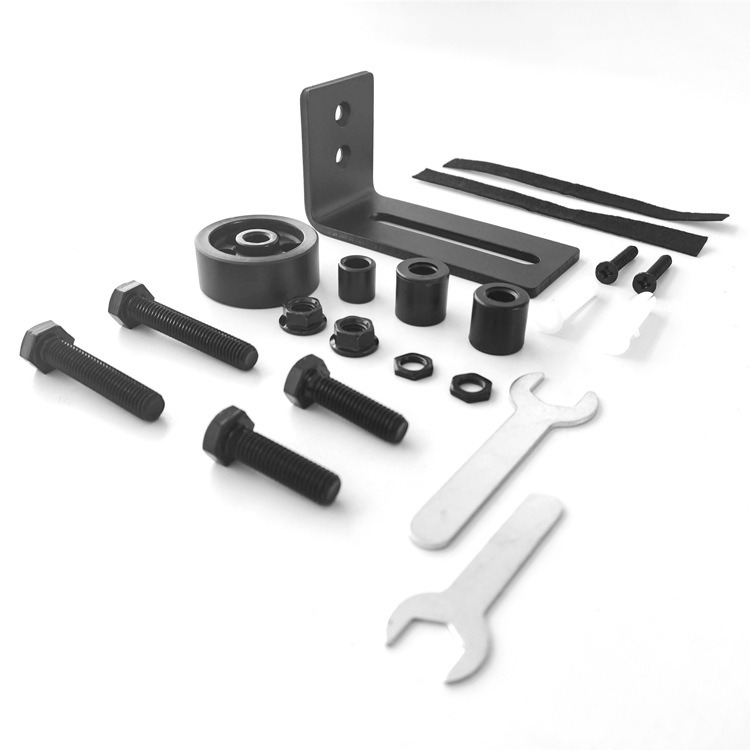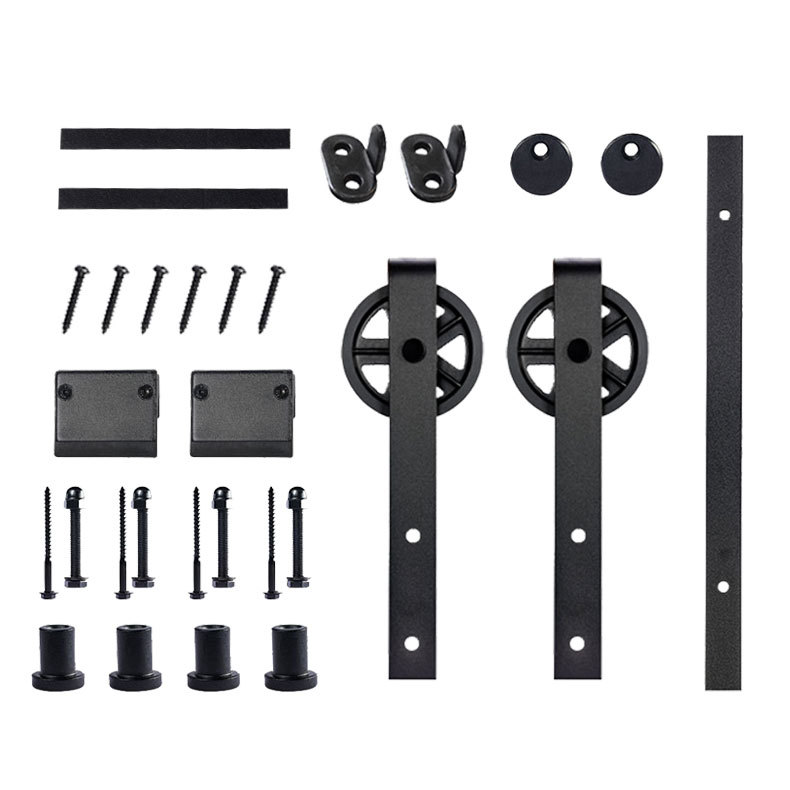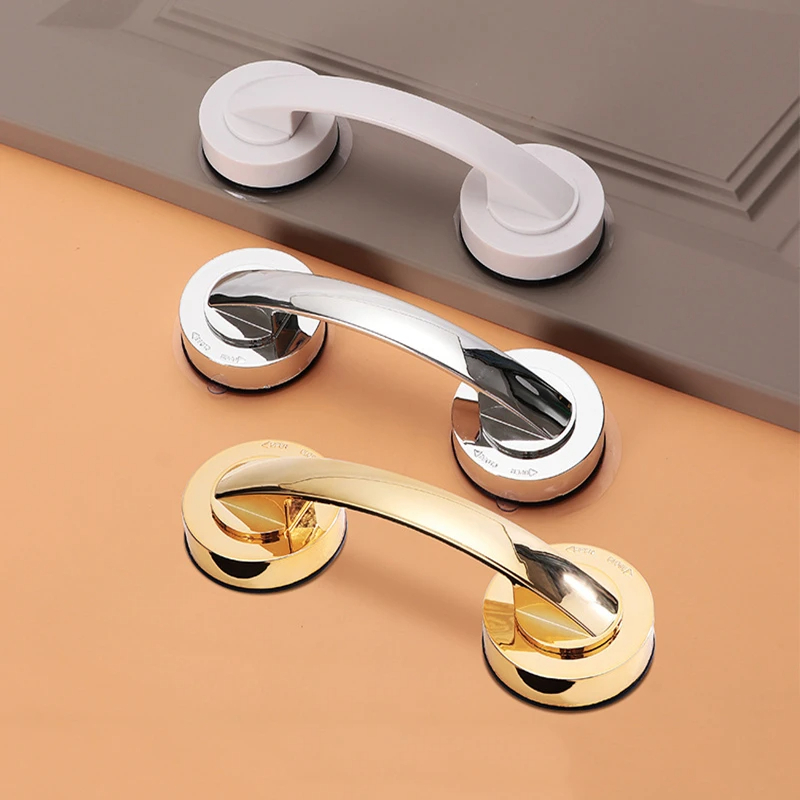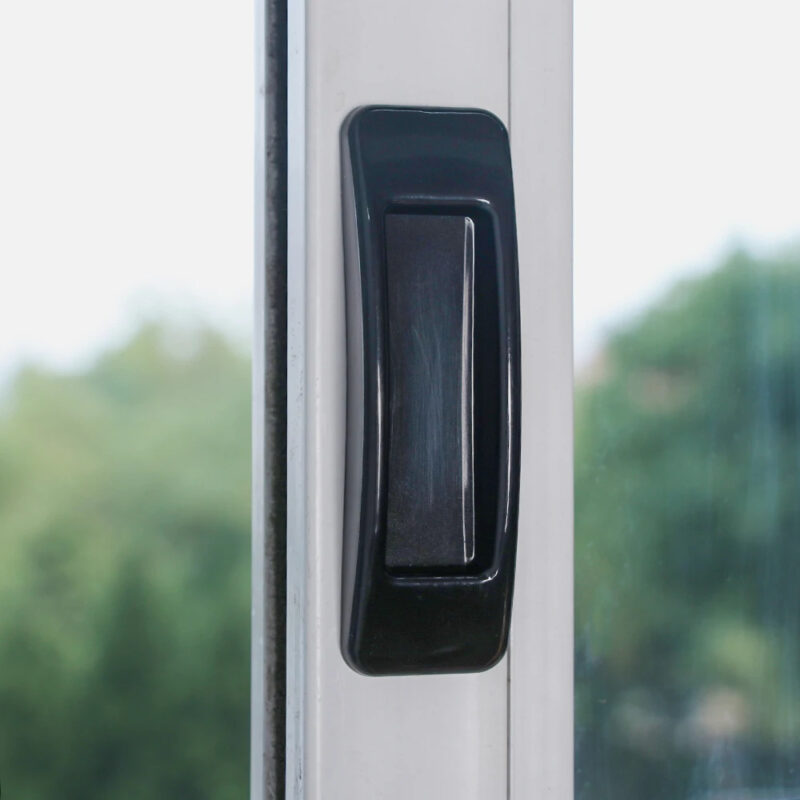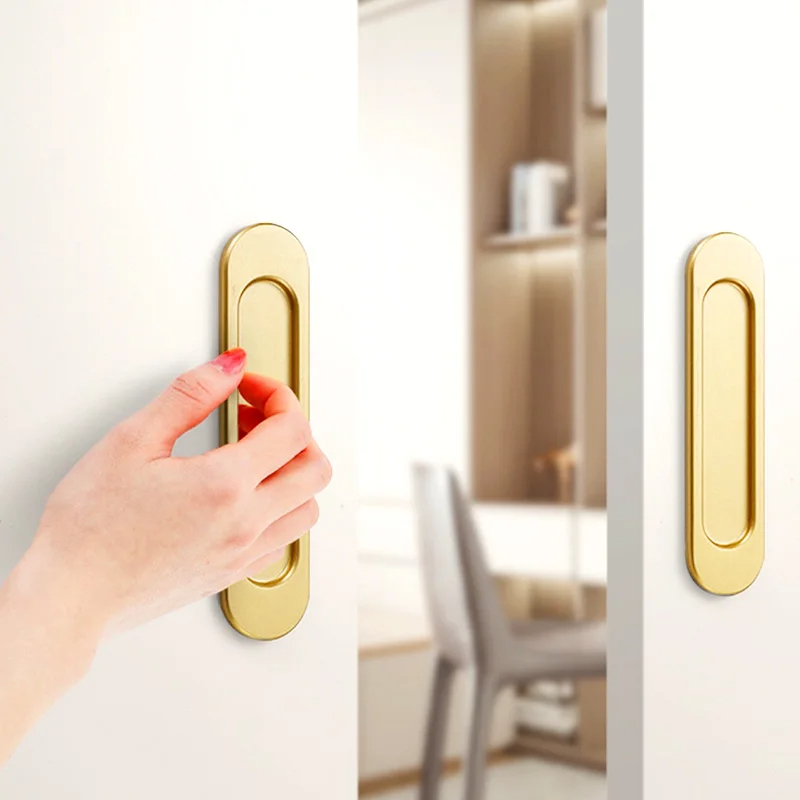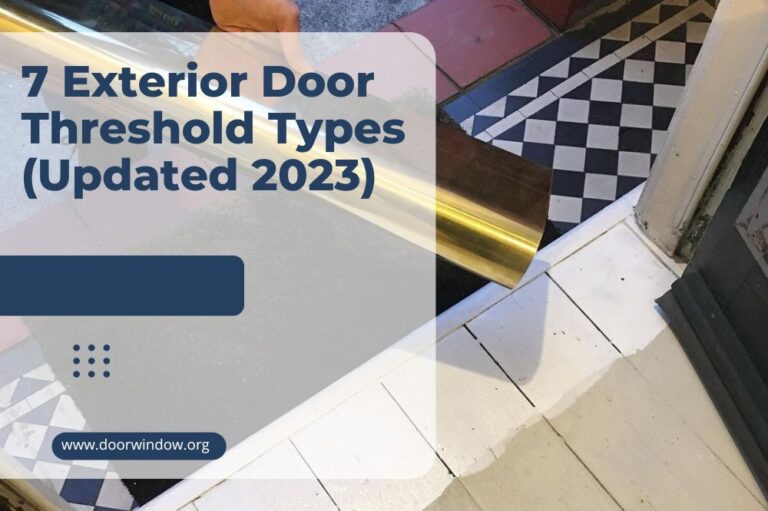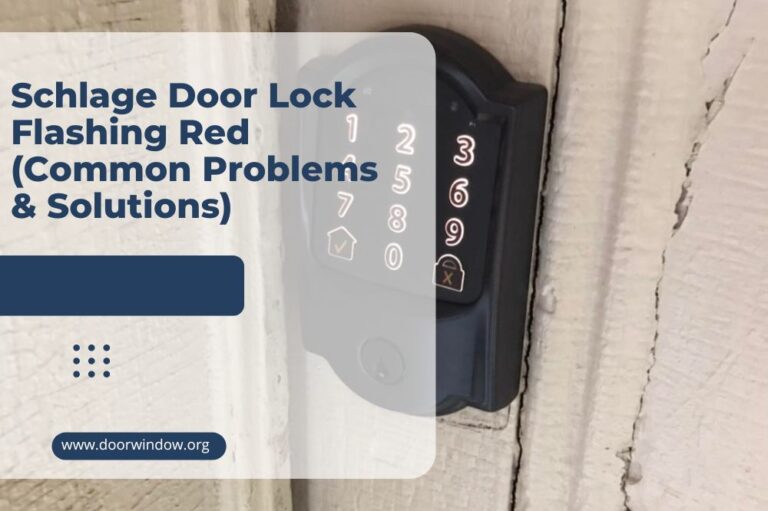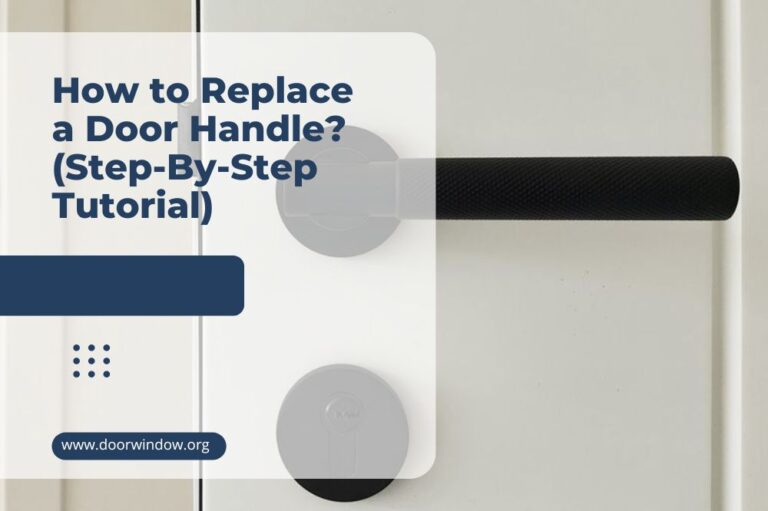How To Soundproof An Apartment Door? ( An Ultimate Guide )
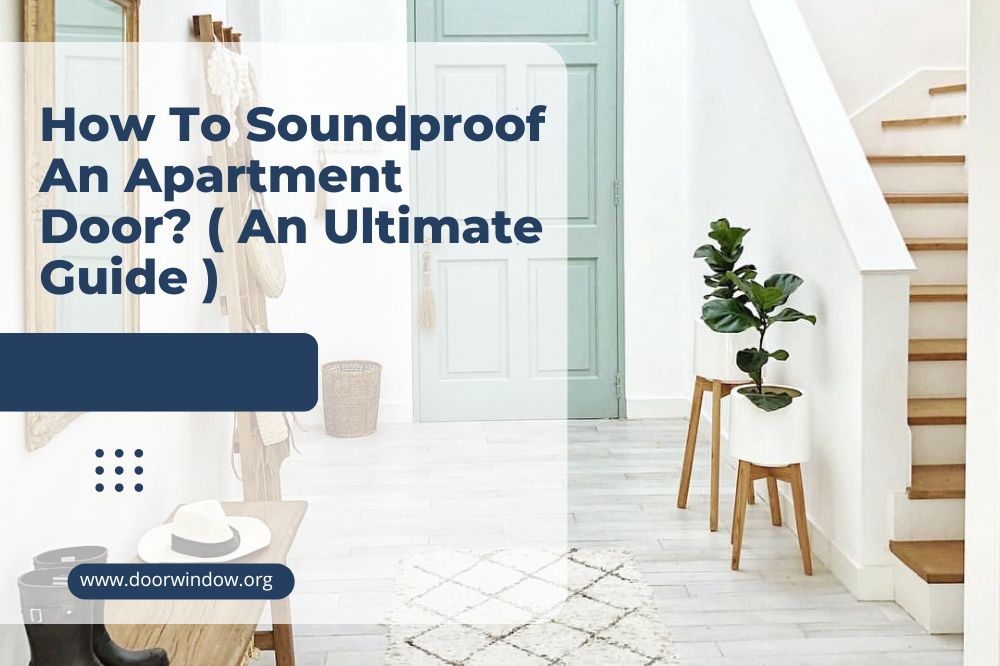
Do you get frustrated trying to sleep, work, or relax in your apartment while noise from the hallway or neighboring units disrupts your peace and quiet?
Noise pollution can be a major issue for anyone living in apartment buildings, and it can be hard to have a quality life at home when your apartment sounds like it’s right next to a construction site.
Fortunately, soundproofing an apartment door doesn’t have to be expensive or time-consuming. In this blog post, we’ll provide tips and techniques on how to soundproof an apartment door that is straightforward, cost-effective, and easy to complete.
Assessing the Current State of Your Door
Before you can begin soundproofing your apartment door, it’s important to assess its current state. This will help you determine the best materials and techniques to achieve maximum effectiveness.
First, look at the type of door you have. Is it a solid wood door or a hollow core door? Solid wood doors are generally more effective at blocking sound than hollow core doors, as they are denser and more solid. However, it is possible to soundproof a hollow core door with the right materials and techniques.
Next, look for gaps around the edges of the door and any holes or cracks in the door’s surface. These can allow sound to pass through, so it’s important to seal them up as part of the soundproofing process.
You should also check for existing soundproofing measures that may already be in places, such as weatherstripping or a door sweep. These can be useful in identifying any areas that still need attention.
Assessing the current condition of your door can help you pick the suitable materials and methods to soundproof your apartment door properly.
Choosing the Right Materials for Soundproofing an Apartment Door
There are several options of materials for soundproofing available, each with its pros and cons in terms of cost, effectiveness, and ease of installation. Here are our top 7 picks that work best.
1. Install a Door Sweep
This is a strip of material, often made of rubber or nylon, that is attached to the bottom of the door and seals against the floor to block sound from passing underneath.
Door sweeps can reduce noise from footsteps and other low-frequency sounds but may not be as effective at blocking higher-frequency noises such as voices or music.
To install a door sweep:
- Begin by gathering the necessary tools and materials. You will need a door sweep, a drill, a screwdriver, a tape measure, and a pencil.
- Measure the door width and cut the sweep to size. However, most door sweeps come in standard sizes, so you may not need to cut them.
- Hold the door sweep against the bottom of the door, with the rubber seal facing down. Use a pencil to mark the locations of the screw holes on the door.
- Drill pilot holes for the screws at the marked locations.
- Hold the door sweep in place and attach it to the door using the screws.
- Ensure it is properly sealed against the threshold. If the sweep is too long, it may drag on the threshold or floor, causing it to become misaligned. If this happens, you may need to trim the excess length from the sweep.
- Once you are satisfied with the fit and seal of the door sweep, remove any debris or dust that may have accumulated during the installation process.
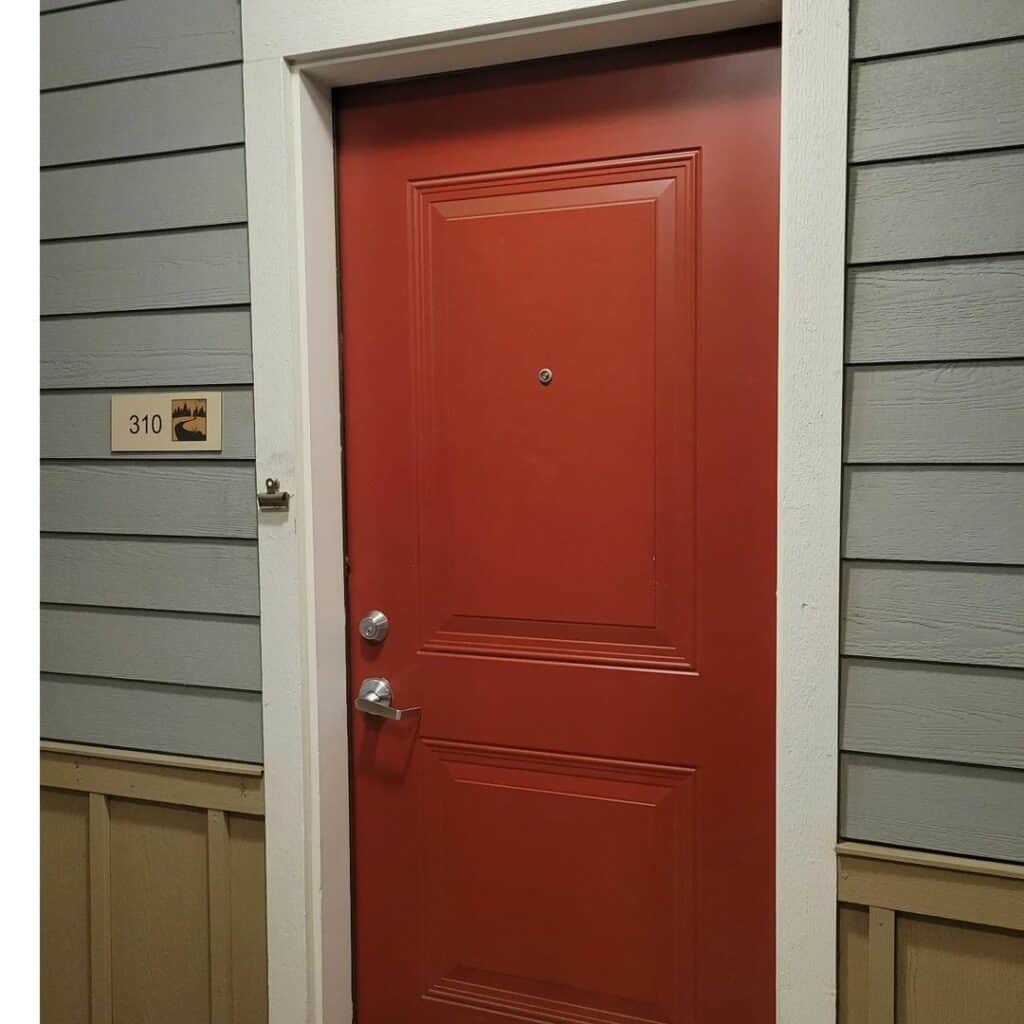
2. Use Rugs or Carpets to Absorb Sound
Rugs and carpets are made of materials that absorb sound rather than bouncing it back, making them perfect for dampening sound coming through a door.
They come in various shapes, sizes, and colors, so you can easily find one to complement your interior design while providing excellent protection from outside noise.
Here is how to effectively use rugs for soundproofing:
- Choose a thick, dense rug made of materials that are good at absorbing sound, such as wool or felt. The thicker and denser the rug, the better it will absorb sound.
- Use a rug pad to keep the rug in place and prevent it from sliding around. This will help the rug to be more effective at soundproofing the door.
- Double up on your rugs by putting one inside and the other outside the door. This sound-trapping technique is only effective when the rugs are on both sides of the door.
- Consider adding additional soundproofing materials like an acoustic caulk sealant. Rugs can effectively reduce noise, but they may not be enough to completely soundproof a door.
3. Use Weatherstripping to Seal Gaps around the Door
Weatherstrips are rubber strips that you can attach around your door frame. They are often used to prevent cold drafts and provide insulation. However, they also help to create a barrier against sound, blocking out any unwanted noise coming through the door.
It is relatively inexpensive and easy to install, making it a good option for those on a budget or with a limited DIY experience. All it takes is a few simple steps and a bit of time.
Here’s a quick guide on how to weatherstrip a door:
- Switch off your lights to identify the area around the door where there are holes. You should see light rays creeping in if there are holes.
- Clean the door’s surface where the strip will be applied. Removing any dirt, dust, or debris to ensure that it sticks properly.
- Cut the weatherstripping to size and attach it to areas with holes and cracks. The strip is self-adhesive, so you should be able to apply it easily.
- If there is still noise coming through, add additional layers of weatherstripping until it is completely sealed off from outside noise.
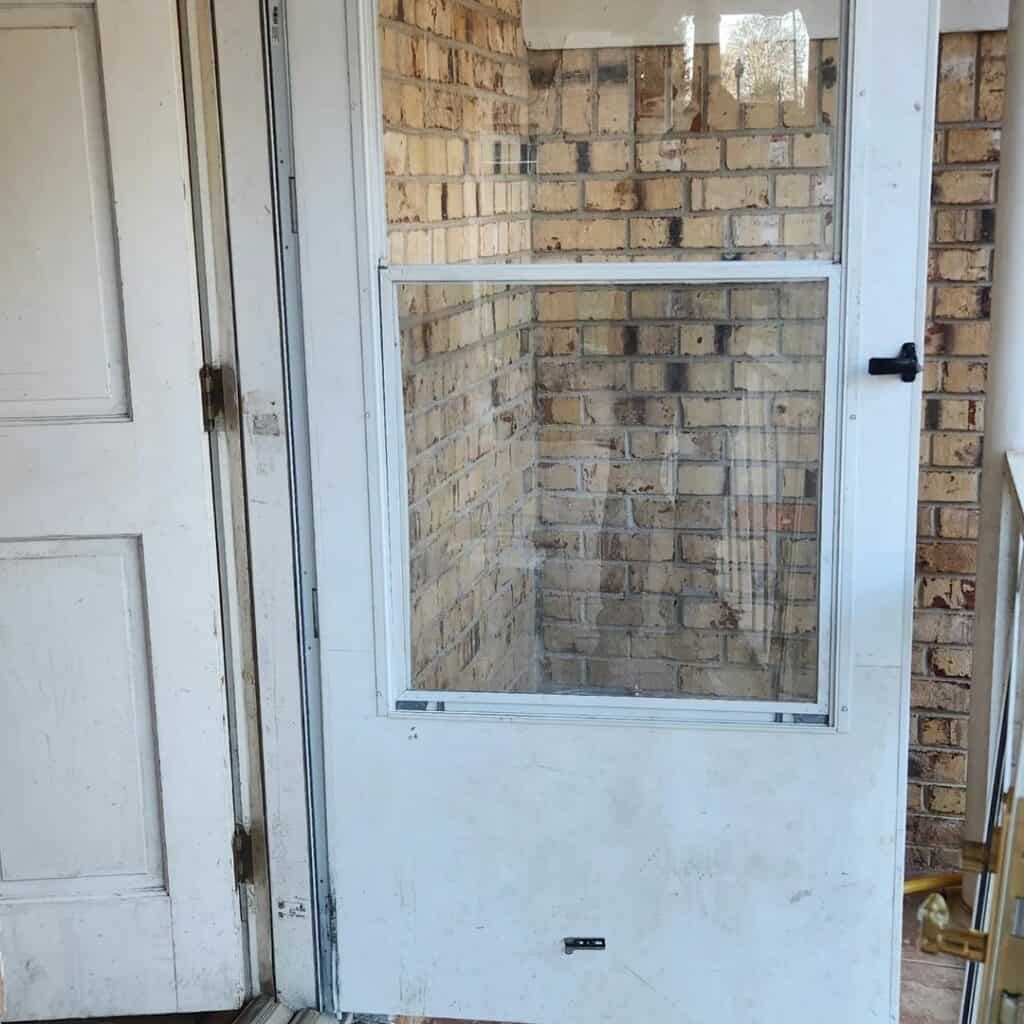
4. Hang a Tapestry or Sound-absorbing Panel
Foam panels are popular for sound absorption because they are easy to install, lightweight, and effective at reducing noise. When sound waves hit a foam panel, the energy from the waves is absorbed by the foam, which causes the foam to vibrate.
This vibration dissipates the energy from the sound waves, reducing their intensity and lowering the noise volume.
Here are some tips for using foam panels for soundproofing:
- Measure the area where you will install the foam panels to ensure that you have enough panels to cover the entire space.
- Choose the right type of foam panels specifically designed for soundproofing, such as acoustic foam panels. These panels are more effective at reducing noise than other types of foam panels.
- Install the foam panels correctly by hanging them on the door. You can also use adhesive or staples to keep them in place.
- If the noise from your apartment door remains loud, add additional foam panels or a different soundproofing material.
5. Install a Door Threshold or Door Saddle
A door threshold or saddle is a metal or wood installed at the door’s bottom. This helps to create an airtight seal, blocking out any noise coming through the gap between the floor and the door.
Installing a door threshold or door saddle is relatively easy and can be done in just a few steps:
- Measure the width of your doorway and purchase a threshold or door saddle that fits.
- Remove the old threshold or door saddle if there is one.
- Place the new threshold or door saddle in the doorway and secure it with screws.
- Check again to ensure the threshold or door saddle is properly installed and sealed from outside noise.
6. Use a Soundproof Blanket
A moving blanket may not have the same aesthetic appeal as a custom-fit fiberglass panel, but it’s a great option for soundproofing because it’s thick and durable.
To install a soundproof blanket:
- You will need to measure the door and then cut the blanket to size.
- Once you have the correct size, attach it to the door using Velcro strips or adhesive tape.
- Make sure that the blanket is securely attached so that it does not move when the door is opened and closed.
You can also use two blankets and sandwich them together to increase the thickness. This will create an even more effective sound barrier.
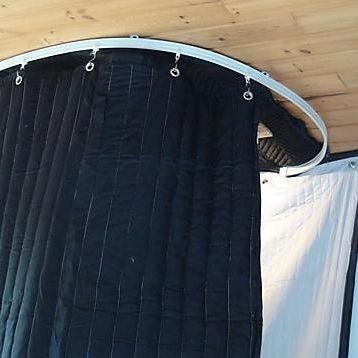
7. Consider Upgrading to a Solid-core Door
Solid wood doors are generally denser than hollow core doors, which makes them better at blocking sound.
The cost is the main drawback to upgrading to a solid-core door. These doors are more expensive and are a more advanced DIY project. So, you’ll also need to factor in the cost of installation by a professional.
However, if you’re up for the challenge and have the budget, this is the most effective way to have a soundproof apartment door.
Conclusion
Whether you use inexpensive and easy-to-install solutions such as door sweeps and weatherstripping or invest in a more permanent solution such as a solid core door. You have soundproofing options available to suit every budget and level of expertise.
Here are some action steps you should keep in mind
- Assess the current state of your door, including the type of door and any gaps or holes, before deciding on the best soundproof material.
- Consider cost, effectiveness, and ease of installation when choosing your soundproof materials.
- Follow instructions and take necessary safety precautions when installing your soundproofing materials.
If you have any questions about soundproofing your apartment door, please leave a comment below. We’d love to hear from you and are happy to help in any way we can.

